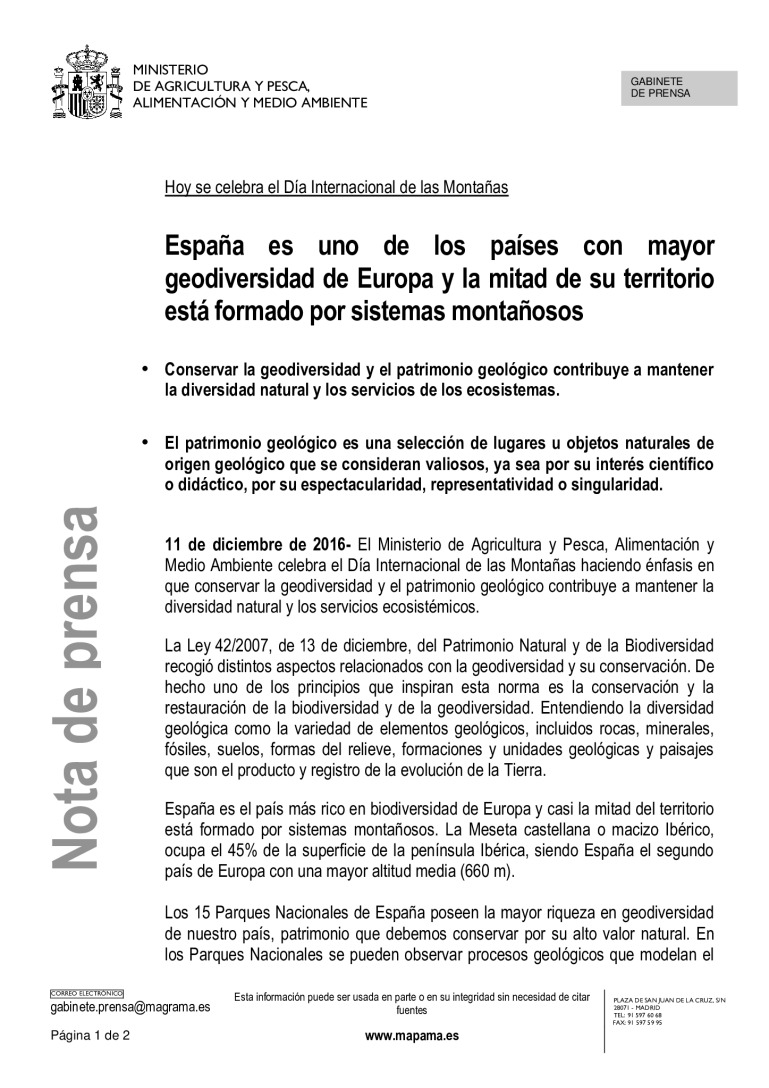The Ministry of Agriculture and Fisheries, Food and Environment celebrates International Mountain Day emphasizing that conserving geodiversity and geological heritage contributes to maintaining natural diversity and ecosystem services.
Law 42/2007, of 13 December, on Natural Heritage and Biodiversity included different aspects related to geodiversity and its conservation. In fact, one of the principles that inspire this regulation is the conservation and restoration of biodiversity and geodiversity. Geological diversity is understood as the variety of geological elements, including rocks, minerals, fossils, soils, landforms, geological formations and units, and landscapes that are the product and record of the evolution of the Earth.
Spain is the richest country in biodiversity in Europe and almost half of the territory is made up of mountain systems. The Castilian Plateau or Iberian massif, occupies 45% of the surface of the Iberian Peninsula, with Spain being the second country in Europe with the highest average altitude (660 m).
The 15 National Parks of Spain have the greatest wealth of geodiversity in our country, heritage that we must preserve for its high natural value. In National Parks, geological processes that shape the landscape can be observed: internal processes that can be observed “frozen in time” and external processes, in many cases active, which represent a very important part of the natural dynamics that give rise to landforms.
Geological diversity, which in Spain is one of the highest in Europe, represents the richness and variety of geological elements that make up the natural landscape. The National Parks Network aims to conserve the most representative of Spain’s natural diversity, both biodiversity and geodiversity.
International conventions and national laws oblige to conserve geological diversity
Geological heritage is a selection of those places or natural objects of geological origin that are considered valuable, either for their scientific or didactic interest, for their spectacularity, representativeness or uniqueness. Recent international conventions and national laws require the conservation of this geological diversity, which is not renewable and whose loss may be irreversible.
Conserving geodiversity and geological heritage contributes to maintaining the natural diversity and ecosystem services that mountains provide us. The birth certificate of each mountain system is in its rocks, and thanks to its geological record we know that the mountain systems of the Iberian Peninsula have a common history.
The mountains keep that record that allows us to understand their origin and the places where they are stored must be preserved, because their loss would deprive us of knowing the origin of our territory. In addition, by multiplying the possible habitats, the geodiversity of mountains becomes the main conditioning factor of their biodiversity. To maintain all this information, since 2007, the national inventory of places of geological interest (LIG) has been carried out in Spain.









